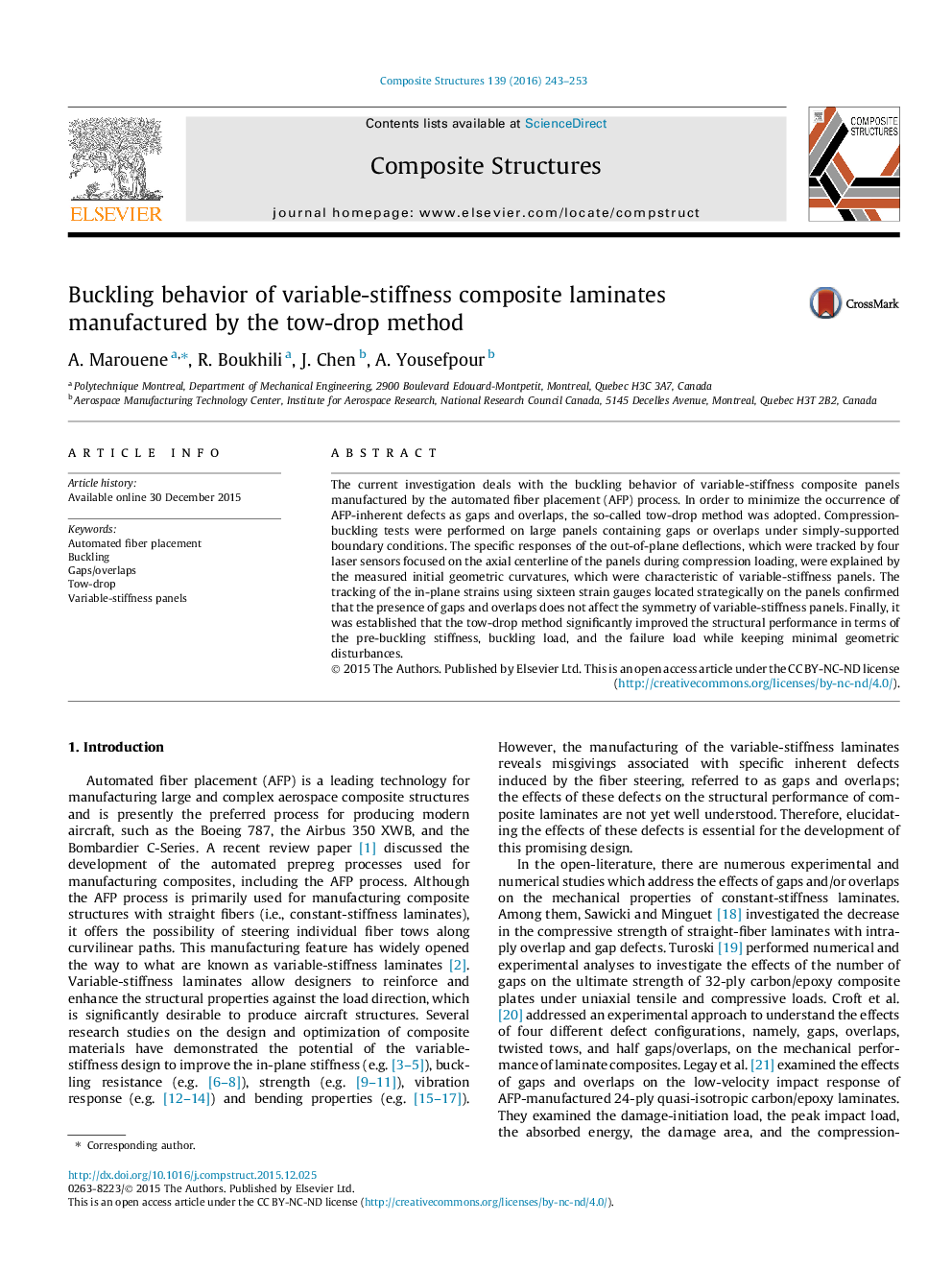| Article ID | Journal | Published Year | Pages | File Type |
|---|---|---|---|---|
| 6706242 | Composite Structures | 2016 | 11 Pages |
Abstract
The current investigation deals with the buckling behavior of variable-stiffness composite panels manufactured by the automated fiber placement (AFP) process. In order to minimize the occurrence of AFP-inherent defects as gaps and overlaps, the so-called tow-drop method was adopted. Compression-buckling tests were performed on large panels containing gaps or overlaps under simply-supported boundary conditions. The specific responses of the out-of-plane deflections, which were tracked by four laser sensors focused on the axial centerline of the panels during compression loading, were explained by the measured initial geometric curvatures, which were characteristic of variable-stiffness panels. The tracking of the in-plane strains using sixteen strain gauges located strategically on the panels confirmed that the presence of gaps and overlaps does not affect the symmetry of variable-stiffness panels. Finally, it was established that the tow-drop method significantly improved the structural performance in terms of the pre-buckling stiffness, buckling load, and the failure load while keeping minimal geometric disturbances.
Related Topics
Physical Sciences and Engineering
Engineering
Civil and Structural Engineering
Authors
A. Marouene, R. Boukhili, J. Chen, A. Yousefpour,
